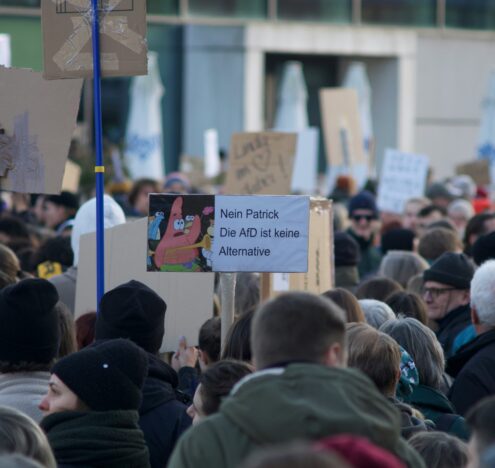This analysis was featured in Critical State, a weekly newsletter from Inkstick Media and The World. Subscribe here.
The Arctic is one of the least hospitable places on the planet, but that has never meant inhospitable. For Indigenous people who have survived and thrived in the coldest reaches of the Northern hemisphere, the Arctic can be a world of abundance, with deep knowledge and practiced skill, making it a life-sustaining home. Yet, the Arctic is warming, thanks to human-caused climate change. It also has the misfortune of being located between the United States and Russia, two nuclear powers who have spent decades anticipating the danger of surprise war blowing in like a cold wind from the north.
In “Pulling back the curtain: coloniality-based narratives of wilderness in US Arctic policy,” Gabriella Gricius examines 21st-century US policy on the Arctic, and specifically how the language used to discuss the region constrains thinking about policy.
To start understanding US Arctic policy, Gricius examined Arctic policy statements from across the George W. Bush, Obama, and Trump administrations, all with an eye toward how the country handled anxiety over the region.
“Anxiety, here, is the ordering principle of how states interact with the world and what they must manage to feel secure. States can never solve anxiety, but they can manage it through routines and narratives,” writes Gricius.
Adopting a different policy for the Arctic, including one of preservation versus exploitation, requires a different narrative among US policymakers.
Here, the Arctic anxiety was threefold: that climate change is making its resources more exploitable, that the resources would go unexploited, or worse, that other nations would exploit the resources of the Arctic faster and better than the United States. To justify aggressive investment in and policy to control the region, successive US administrations all adopted the language of “wilderness” to justify their policies.
“Importantly, wilderness in the American Arctic is not diminishing in any material way. Rather, its character is fundamentally changing because of climate change from a region that was relatively difficult for extraction purposes to one that is significantly more accessible,” writes Gricius.
While the planet is warming from human-caused climate change, the Arctic is warming the fastest, drastically changing life in the thawing north. But when US policy statements talk about the risk of a diminished Arctic, these statements largely sidestep climate change and instead highlight that reduced sea ice means easier access for drilling the ocean.
“In short, removing responsibility takes away settler blame and treats this diminishing as a blameless event rather than connecting this to capitalist and colonialist practices that are intrinsically connected to climate change. Furthermore, by treating the wilderness as a disappearing object with no subject, these policies even more so reinforce older American conservation narratives,” writes Gricius. “This has implications for Indigenous People, who still live in Arctic wilderness, and are not diminishing with the region, but in fact require more funding, visibility, and assistance in dealing with food and energy insecurity.”
By seeing the Arctic as unsettled, and thus open for settler exploitation, US policy across administrations treats the area as an untapped resource, rather than a lived-in and inhabited place. Adopting a different policy for the Arctic, including one of preservation versus exploitation, requires a different narrative among US policymakers. To get there, presidents and analysts likely need to abandon the notion of the Arctic as available for exploitation.




















